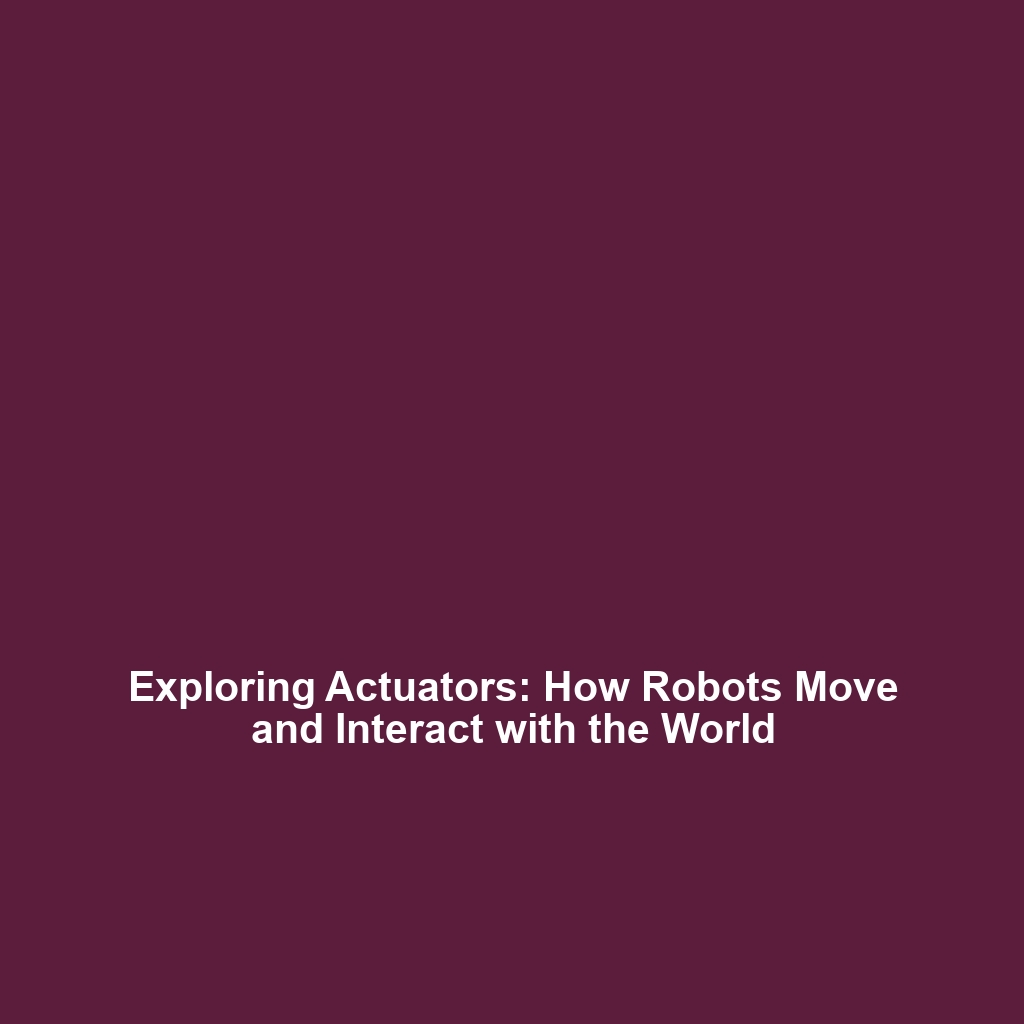Actuators and Mobility: How Robots Physically Interact with the World and Move
Introduction
Understanding actuators and mobility is fundamental to the field of autonomous robots. These components are critical as they serve as the driving force behind movement and interaction with the environment. Actuators enable robots to perform a variety of tasks ranging from simple movements to complex manipulations. This article explores the intricacies of how actuators and mobility work together to enhance robot capabilities in diverse applications.
Key Concepts
The study of actuators and mobility in autonomous robots encompasses several key concepts:
1. Types of Actuators
Actuators can be broadly classified into:
- Electric Actuators: Utilize electric motors to convert electrical energy into mechanical movement.
- Pneumatic Actuators: Use compressed air to create motion.
- Hydraulic Actuators: Employ liquid pressure for robust movements.
2. Mobility Mechanisms
Autonomous robots employ various locomotion strategies, including:
- Wheeled Mobility: Ideal for speed and efficiency on flat surfaces.
- Legged Mobility: Provides adaptability over uneven terrains.
- Tracked Mobility: Suitable for stability and handling rugged environments.
Applications and Real-World Uses
The applications of actuators and mobility in autonomous robots are vast and growing. Here are notable examples:
- Agriculture: Autonomous tractors use actuators for precision farming.
- Healthcare: Robotic surgery systems rely on precise actuators to perform intricate tasks.
- Logistics: Automated guided vehicles (AGVs) utilize mobility mechanisms for material handling in warehouses.
Current Challenges
Despite advancements, there are several challenges of actuators and mobility within the broader scope of autonomous robots:
- Energy Consumption: High energy requirements can limit operational efficiency.
- Complex Terrain Navigation: Mobility mechanisms struggle with highly variable environments.
- Sensing and Feedback: Accurate positioning and movement depend on reliable sensor integration.
Future Research and Innovations
Future innovations in actuators and mobility promise exciting developments for autonomous robots. Key areas of research include:
- Soft Robotics: Development of flexible actuators for delicate interactions.
- AI-Driven Mobility: Implementing machine learning for adaptive movement strategies.
- Energy Harvesting Systems: Innovations aimed at power efficiency and sustainability.
Conclusion
In summary, actuators and mobility are fundamental components shaping the interaction and movement of autonomous robots. As technology evolves, ongoing research promises to address current challenges and unlock new capabilities, ultimately broadening the impact of robots in various sectors. For further reading on related topics, explore our articles on robot sensors and autonomous navigation systems.
